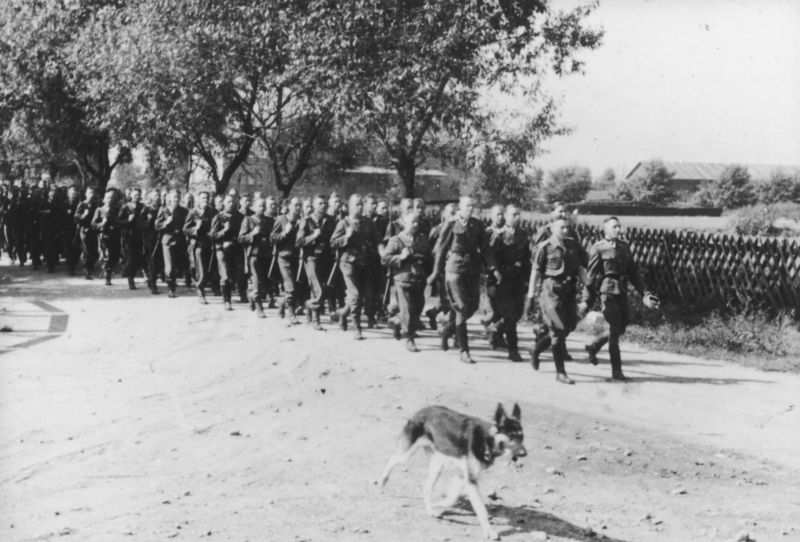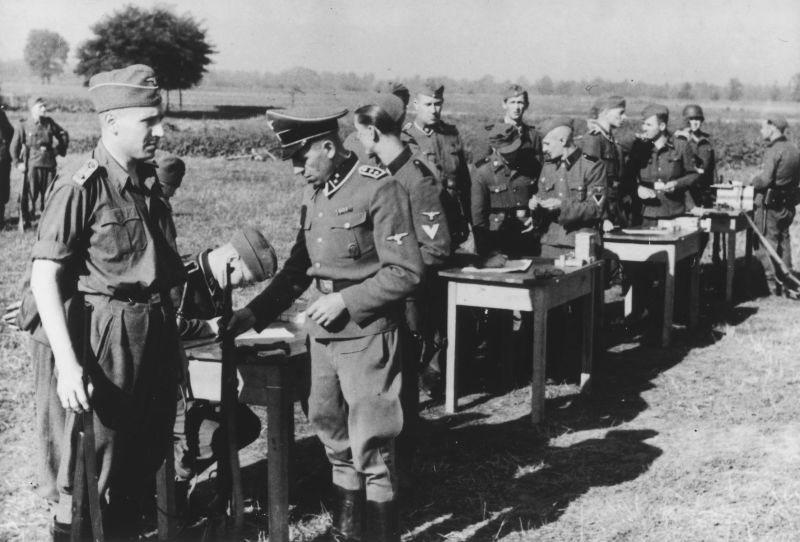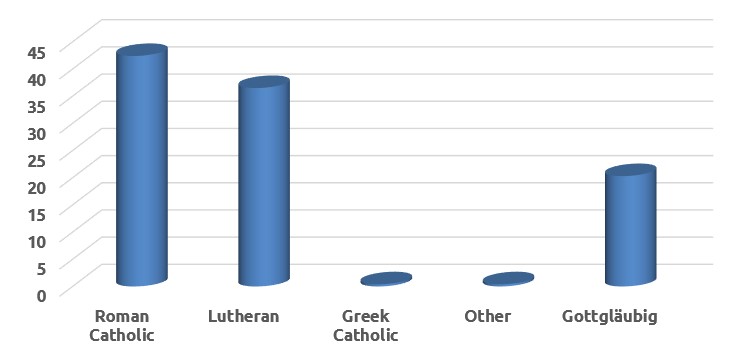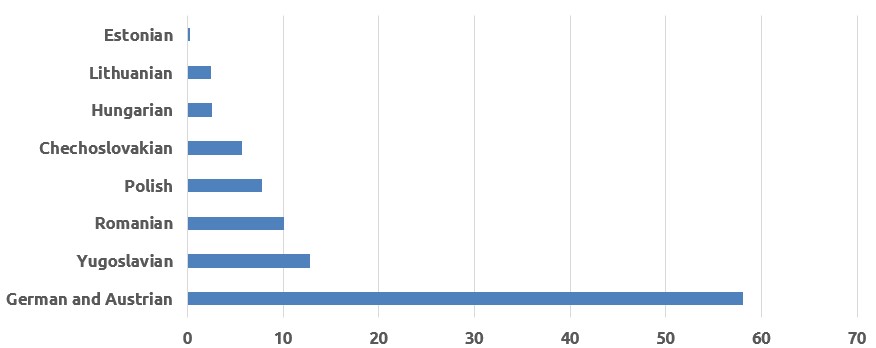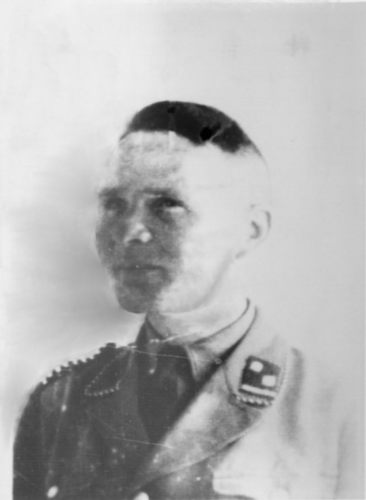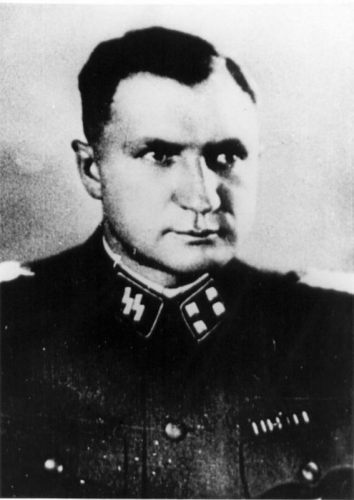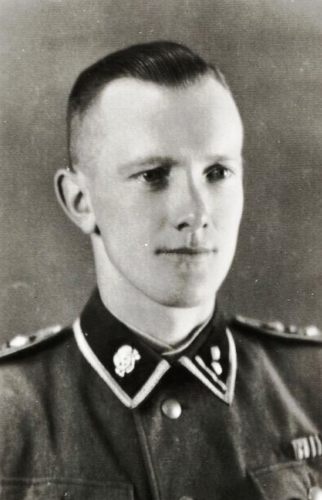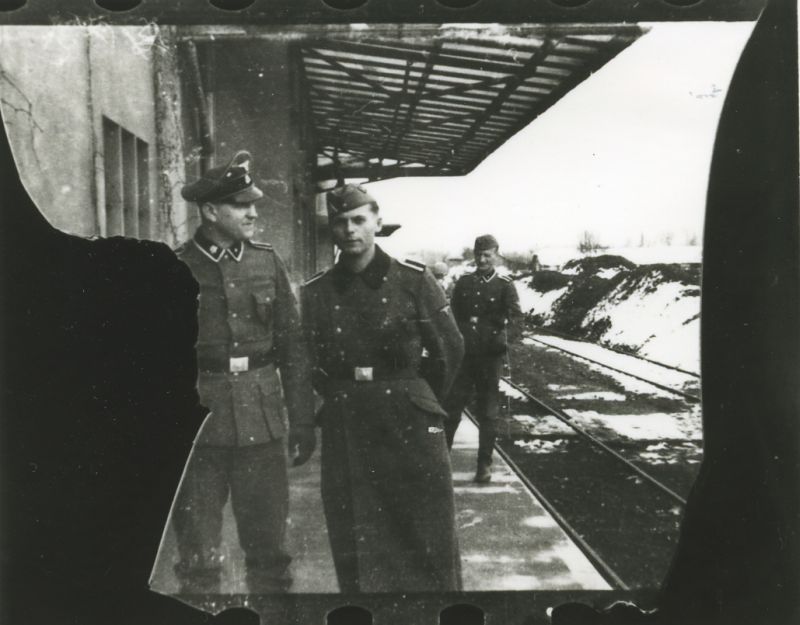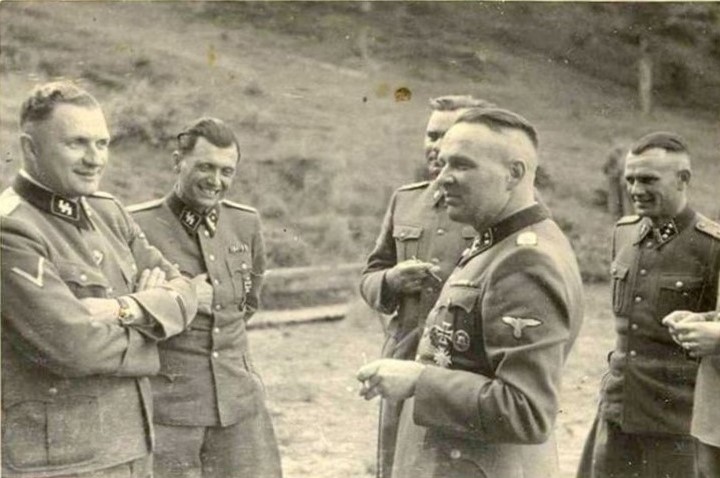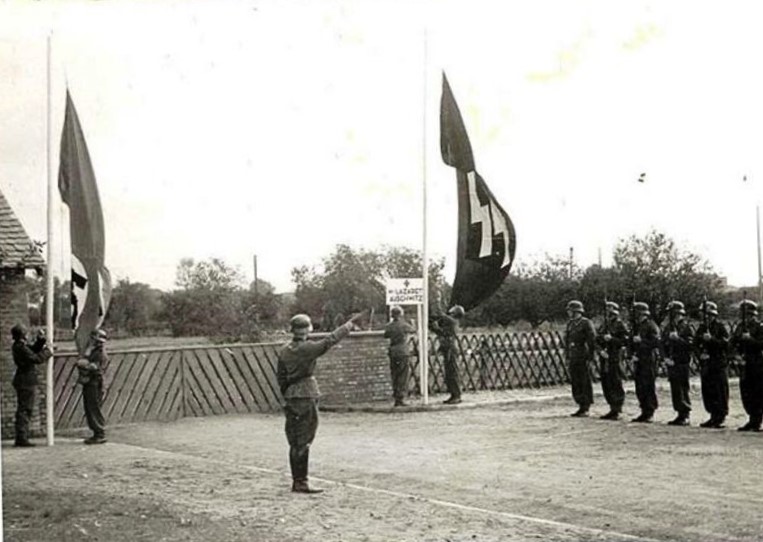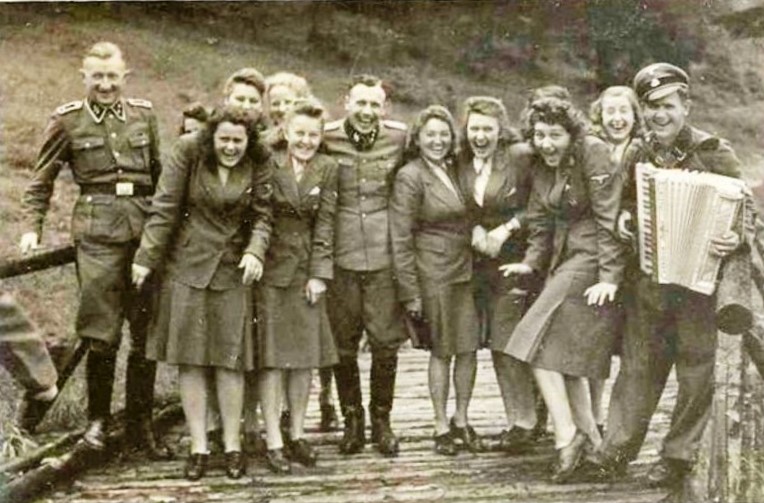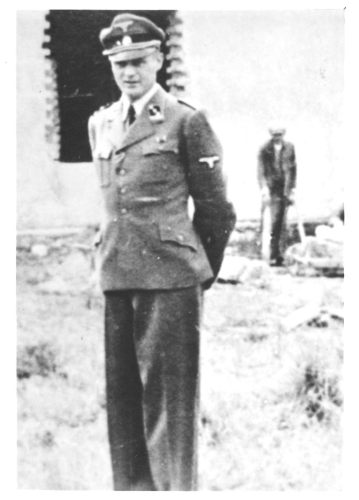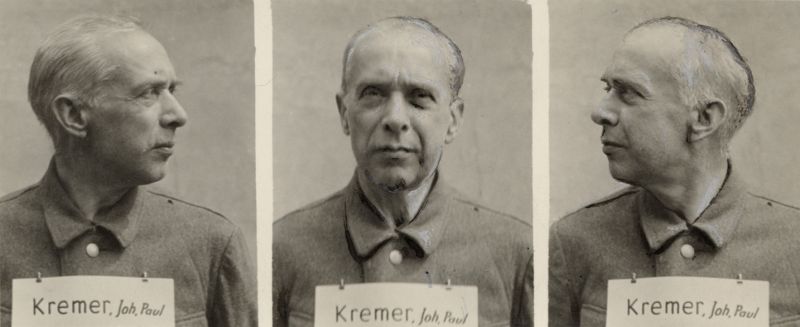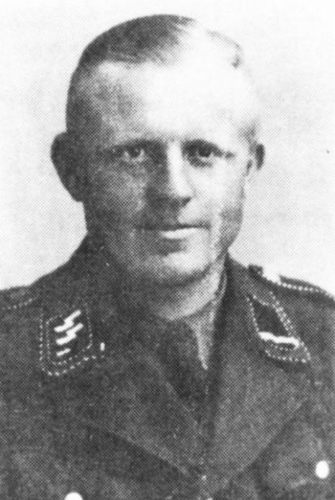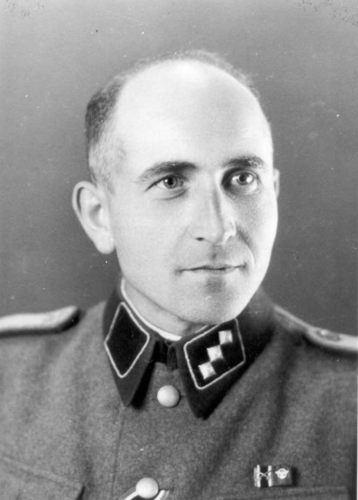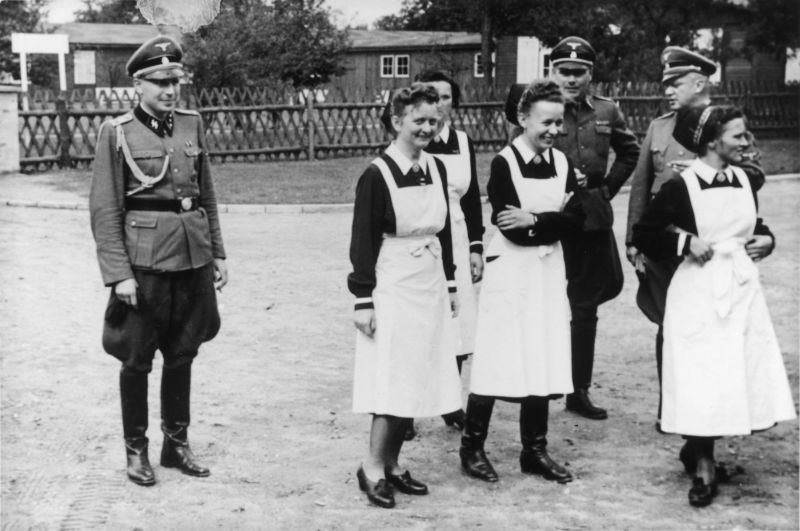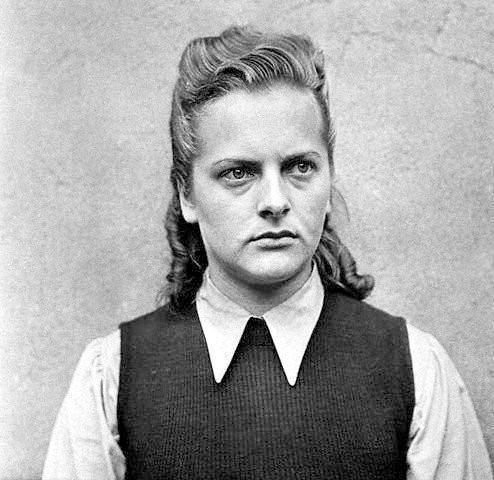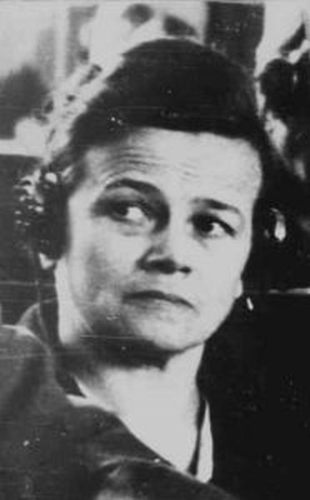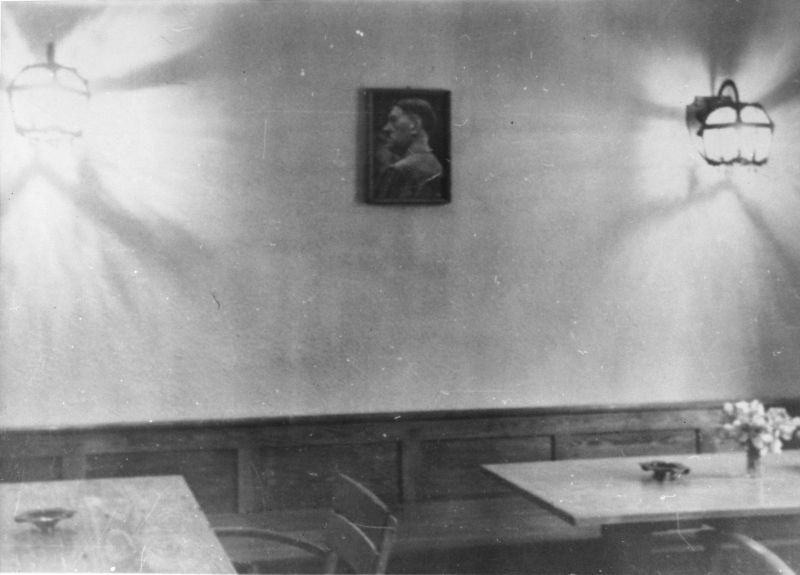The SS essentially consisted of two organizational units: administrative offices in the form of seven departments (see chart below) and sentry units belonging to the Death’s Head Battalion (SS-Totenkopfsturmbann) of Auschwitz.
This battalion had its own commander, Friedrich Hartjenstein, the supervisor for a small number of organizational staff, divided into units: provisions, command, and training. All the units were subordinate directly to the camp commandant until November 1943. Later, following the division of Auschwitz into three separate entities—Auschwitz I-Stammlager, Auschwitz II-Birkenau, and Auschwitz III-Aussenlager with its headquarters in Monowitz—each received a separate commander and several guard companies. The commandant had complete authority over the camp and the SS garrison. In turn, he reported to the Inspectorate of Concentration Camps. After the inspectorate became part of the SS Main Economic and Administrative Office (Wirtschaftsverwaltungshauptamat, SS-WVHA) on March 3, 1942, the concentration camp commandants came under the authority of Office Group D (Amtsgruppe D) in the SS-WVHA. The Commandant of Auschwitz I was responsible for the functioning of the entire camp and at the same time, was the commander of the whole garrison. Dedicated guard battalions, as a separate structure still existed until May 1944, when three sentry battalions were established at each of the Auschwitz concentration camps. This also changed the numbering of the companies in Birkenau and Monowitz.
In November 1944 another reorganization took place: the battalion of Birkenau disbanded and it became subordinate to the companies of the sentry units in the main camp.

